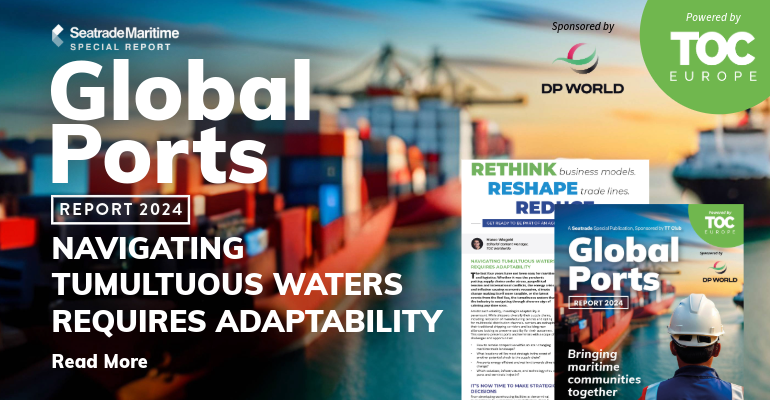Amidst such volatility, investing in adaptability is paramount. While shippers diversify their supply chains, including relocation of manufacturing centres and opting for multimodal distribution channels, carriers are reshaping their traditional shipping corridors and building new alliances looking to preserve stability for their customers.
This scenario presents ports and terminals with a scope of challenges and opportunities:
- How to remain competitive within an ever-changing maritime trade landscape?
- What locations will be most strategic in the event of another potential shock to the supply chain?
- Are ports energy efficient and resilient towards climate change?
- Which solutions, infrastructure, and technology should ports and terminals invest in?
It’s now time to make strategic decisions
From developing warehousing facilities at the terminal, to investing in AI, automation or electrification, there is no “One answer fits all” in this scenario. Each terminal is looking at their own business strategies when it comes to making such decisions. However, there seems to be one common trend across major industry players and that is logistics integration: Moves made by terminal operators and their sister shipping lines, like APM Terminals with Maersk, TiL Group with MSC, or the recently acquired SAAM Terminals by Hapag-Lloyd, show that increasing their stake within the maritime supply chain makes them more resilient against potential disruptions. At the same time, these and other operators are negotiating concessions in specific regions with strong economic potential but insufficient infrastructure. This strategy has been especially pursued by Emirati operators, DP World and AD Ports Group, with a plethora of projects across the globe and diversified business units focusing on not just cargo handling but also logistics, the development of free economic zones or even technology. Just like shipping lines are now logistics integrators, these may well be trade facilitators.
- What strategies are industry leaders pursuing in search of adaptability, resilience and delivering value to their customers?
- How is logistics integration and diversification transforming industry dynamics?
- What does it mean for ports and terminals to be a trade facilitator?
Industry efforts need to be articulated
A major barrier that industry still needs to overcome is its disconnection. Smooth flows of information across each level of the maritime supply chain and proper industry collaboration remains incipient. Stakeholders, particularly the shippers, still request clarity on issues like CO2 emissions released across their value chain, the state of their cargo at sea or safety container handling protocols at the terminal.
- While there are partnerships looking to scale up decarbonisation (i.e. ZEMBA, ZEPA or coZEV) and initiatives that push towards data collaboration (i.e. the growing implementation of the eBL or the MSW becoming mandatory since January 2024), their reach is limited to certain regions and players that are already ahead of the curve, making it difficult to enable industry-wide adoption. Alongside these challenges there is also the issue of standardisation. Harmonised standards are necessary to benchmark and future-proof not just present or future initiatives aiming to facilitate energy transition or digitalisation, but also any potential investments for ports and terminals in terms of operational equipment, automation solutions or infrastructure.
- From digitlisation to decarbonisation, what are the main barriers that continue to slow down these transformation initiatives across the industry?
- Benchmarking efficiency and future-proofing investments?
- Can the maritime value chain vertically articulate its endeavours?
Rethink, reshape, reduce!
The industry may be looking at different ways to adapt, modernise or decarbonise, but without rethinking their business models within the context of harmonised standards that enable benchmarking and investment futureproofing, reshaping the trade lanes when necessary and developing a maritime trade network that is ready to react accordingly, as well as reducing emissions in a holistic manner that brings together all stakeholders within energy value chains, navigating through these tumultuous waters will remain a difficult task.
How can we:
- RETHINK business models and investments for ports and terminals?
- RESHAPE shipping corridors amidst ongoing volatility?
- REDUCE carbon emissions to enhance value and sustainability?
TOC Europe, the AGM for Port & Cargo Supply Chain Professionals, takes place 11 – 13 June 2024, Rotterdam Ahoy, Netherlands
Register Now for free entrance to the exhibition and conference.
View Exhibitor List & Access Conference Agenda
Explore more topics in our Global Ports Report 2024
Copyright © 2024. All rights reserved. Seatrade, a trading name of Informa Markets (UK) Limited.
Add Seatrade Maritime News to your Google News feed.  |
